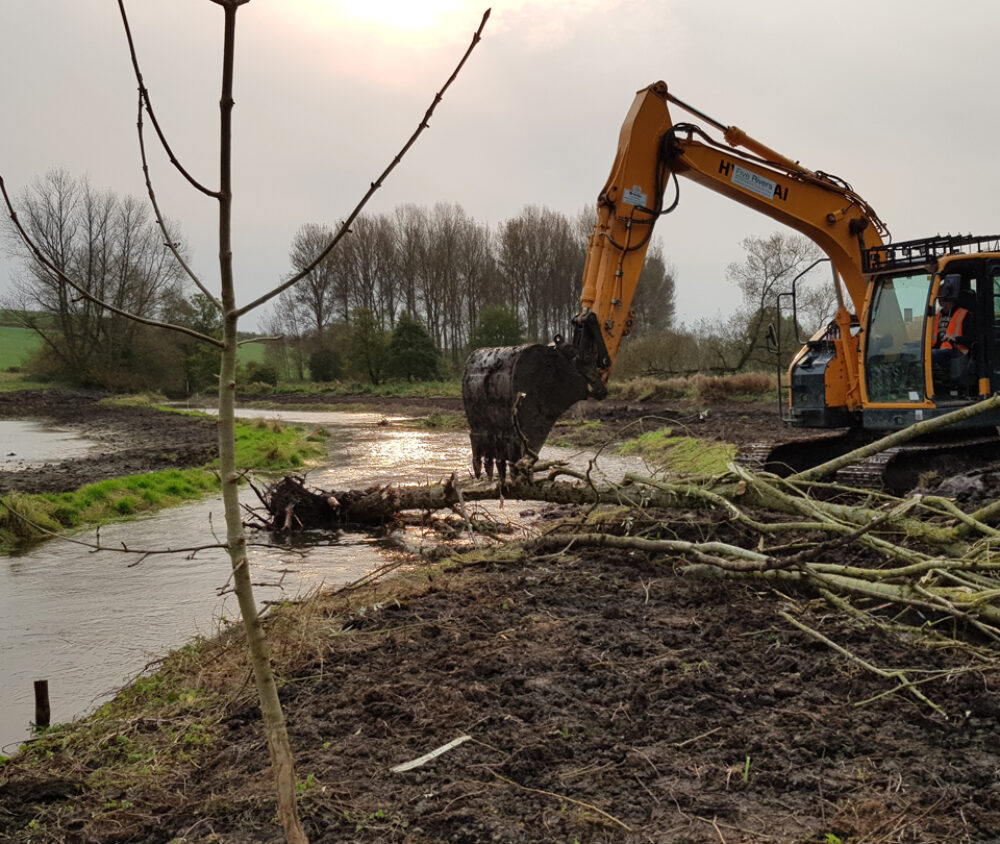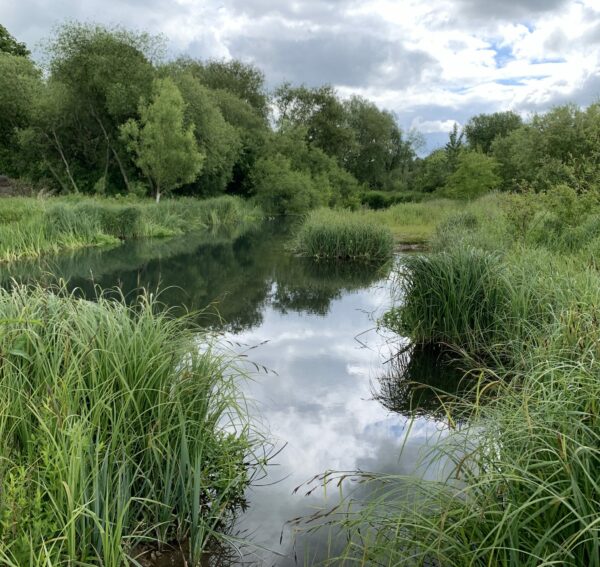
River Restoration
As experts in river restoration, we’re considered to be one of the UK’s leading industry specialists in ecological and environmental solutions.
What is River Restoration?
River restoration is the act of reinstating natural processes to help restore a naturally functioning and dynamic ecosystem. Geomorphological changes (such as channel narrowing or stage zero restoration) can not only help the river to function more naturally, but can increase the potential for additional natural habitat improvements beyond the scope of the project.
FiveRivers and River Restoration
Rivers are our lifeblood, on both a global scale and on a personal level. River restoration, as a natured-based solution to traditional engineering, is where we started as a business more than 25 years ago. With more than two decades worth of experience delivering projects around the UK, we really do know what it takes to deliver successful works. FiveRivers is proud to be well-known as an expert in river restoration, which is why we’re considered one of the UK’s leading industry specialists in ecological and environmental solutions. It’s also why we’ve been trusted to monitor, design and construct river restoration schemes across the country working on behalf the Environment Agency, Natural England, Middlesex Wildlife Trust, water companies like Anglian Water and Southern Water, private landowners and The Rivers Trusts.
We can undertake restoration and enhancements on all river systems, from small tributaries to estuarine habitats, with a particular specialism in the restoration of chalk streams habitats. Whether your project is large- or small-scale, our knowledgeable team will guide you through the entire process, from design and regulatory requirements to construction.
Leading Specialists in River Restoration
With river restoration being our most sought-after service, you can be certain that any work we carry out will be nothing short of exemplary. We view river restoration as part art, part science, so as well as being confident that our designs are functional, we make sure that the end result is beautiful, too. We undertake a wide variety of restoration and enhancements on all river systems, from small tributaries to estuarine habitats, and we’re also highly skilled in the restoration of chalk streams.
Environmental protection is at the heart of what we do, with our river restoration projects being carried out in a way which ensures the greatest environmental gain for the available budget.

The Problems
Poor River Quality
Our clients engage our expertise in river restoration for a number of reasons. Common challenges that we are able to offer flexible, skilled and cost-effective solutions to include:
- Poor river habitat quality
- Historic damming of a river such as Weirs, mill structures, other instream obstructions
- Poor historic management of rivers such as Dredging, straightening, removing instream habitat features
- Erosion protection
- Amenity benefits, such as for angling and tourism
- Alternative nature based solutions to replacing failing traditional infrastructure
- Requirement for habitat mitigation for specific protected species such as water voles and otter
- Visual improvements as part of development or housing
- A need to improve water framework classification
- A need to achieve targets for biodiversity net gain

The Solutions
Flexible Interventions
River restoration is our specialism: we’ve earnt the trust of countless clients for over 25 years due to the quality of our work. Additionally, we are members of the River Restoration Centre (RRC), a national body which champions best-practice river restoration, habitat enhancements and sustainability. Click through to our case studies page to see some examples of our completed projects.
We offer a wide range of effective nature-based solutions for your river restoration scheme, and are always at the forefront of new developments in the industry, reflecting our passion for the river environment. Common methods we use in our river restoration projects include:
- Paleochannel restoration
- River plan form re meandering
- Instream marginal habitat reinstatement
- Bed level raising including riffle reinstatement
- Flood plain reconnection
- Stage Zero Restoration
- Soft engineered erosion protection
- Natural flood management features
- Fish passage improvements, both engineered and naturalistic
We also offer a range of bio-engineering and light civil engineering services to compliment schemes such as pedestrian bridges, water level control and flood control structures, and can act as designer and contractor as required.
At FiveRivers, we take our commitment to our clients and the natural world seriously, and strive to work in the most holistic and cost-effective manner possible. This includes using site-won materials whenever feasible to complete all river restoration works.

Contact us
Talk to an expert in River Restoration
Luke Roberts
Construction Manager
Get in touch by either phone or email to speak with Luke and discuss your needs. Alternatively click the button below to complete our contact form.
Telephone: 01722 783 041
Email: sales@five-rivers.com

Thank you for booking.
To stay in touch, please sign up to our newsletter.
Return to five-rivers.com



